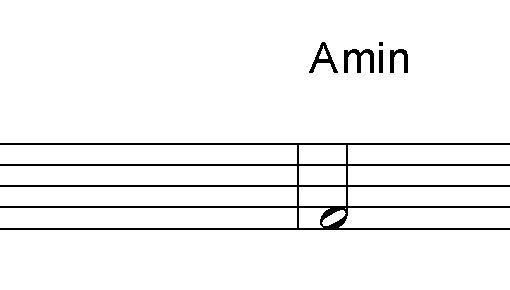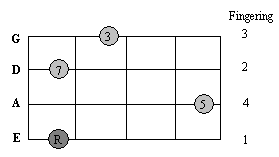Level: beginner
No part of this lesson may be copied, reproduced, or distributed in any form without consent of the author. Copyright © Doug Ross, all rights reserved.
If you have recently acquired your first bass, you might have gotten an electronic tuner to go with it. Modern digital tuners are quite accurate and useful tools, but it’s also important to be able to tune your instrument using your ears. I always double check my tuning by ear before performing, even after tuning up electronically. This lesson will explain how to get your bass in tune without a tuner. If you are completely new to the bass, please don’t do any extreme tightening. When properly tuned, your strings should not be falling off of the bass, but they shouldn’t be extremely taut, either.
Step 1. Check your tuning by comparing a note on your bass to an external reference pitch. For a reference pitch, you can use a piano or this handy online tuning fork. Some metronomes also have an “A440” setting which can be your reference. First sustain an A note on the reference instrument, then pluck the open A string. (second thickest string) on your bass. Be careful to hold the other strings quiet on your bass while you let the A string ring.
Step 2. As both instruments ring out together, listen for any audible “waves”, or pulsing beats in the combined sound. The faster the waves, the farther out of tune you are. If you’re exactly in tune, your bass and the reference pitch will blend together smoothly with no perceptible waves, almost as one. If you’re not even in the ballpark, you might not hear any waves, but rather a dissonant clash of totally different pitches. But in most cases, you will start out close enough to hear waves in the sound. You may need to pluck the A string several times (about once every 5 seconds) before you can discern the waves. If there are no waves, skip to step 4.
Step 3. If you do hear waves, try to determine which A is higher in pitch, your bass or the reference instrument. Play them one at a time to compare. If your bass is lower than the reference, then pluck you’re a string one more time and slowly turn the A string tuning peg to tighten the string (counter-clockwise on most basses) as it continues to ring. You will hear the bass’s pitch go higher and the waves between your bass and the reference pitch should slow down as you do this. If your bass is higher than the reference, you will need to loosen the tuning peg. The goal is to turn until the waves disappear completely. Now you’re a string is in tune!
Step 4. At this point, the A string itself becomes our reference pitch, and we will tune the remaining three strings to match it. The simplest way to do this is using the 5th fret rule: The note at the 5th fret of any bass string should match the next thinner open string. Play the A string and let it continue to ring. As it rings, pluck the note at the 5th fret of your lowest string (the E string). This should match the open A. Be careful not to accidentally mute the A string as you fret the E string! You will again be listening for waves as the two strings ring together. This time, we are turning the E string tuning peg to eliminate the waves as described in step 3.
Step 5. Halfway done! We have now got our two lowest strings in tune, and you’ve probably already surmised that the top two strings are next. Remember the 5th fret rule. We know that our A string is in tune, so the open D string will have to be compared to the 5th fret of the A string, right? Right! Again, listen for waves between the two strings, and make sure that you’re reaching for the D string tuning peg – we don’t want to mess up our reference pitch!
Step 6. Let’s follow the same procedure to get the G string in tune. Pluck the open G string and compare it to the 5th fret on the D string. Turn the G string tuning peg as necessary. Waves all gone? You’re ready to rock!
I recommend tuning your bass by ear every time before you play it. If you own an electronic tuner, try using it after you’ve tuned by ear to double check your accuracy. It might take a little while to get the hang of hearing the waves and tuning quickly and accurately. But this is the start of developing your musical ear. I should also mention that there is another good way to tune by ear. If you know how to play harmonics on the bass, try comparing the 7th fret harmonic on the G string to the 5th fret harmonic on the D string. Yep! That method works for each pair of strings just like the 5th fret rule. If you are not yet familiar with harmonics, then stick with the method described above for now.
Most basses hold their pitch pretty well after being tuned properly. If your instrument still isn’t playing consistently in tune after following the above procedures, it might be suffering from intonation problems, faulty hardware, or very old strings. Usually not a big deal, but you may need to consult a professional guitar repairman in such cases.



